📣 For more lifestyle news, click here to join our WhatsApp Channel and also follow us on Instagram
Celebrate World Coconut Day with delicacies from Kashmir to Kerala
From traditional treasures to recipes influenced by the French and Portuguese, take your taste buds through India’s kitchens and their love for the coconut.
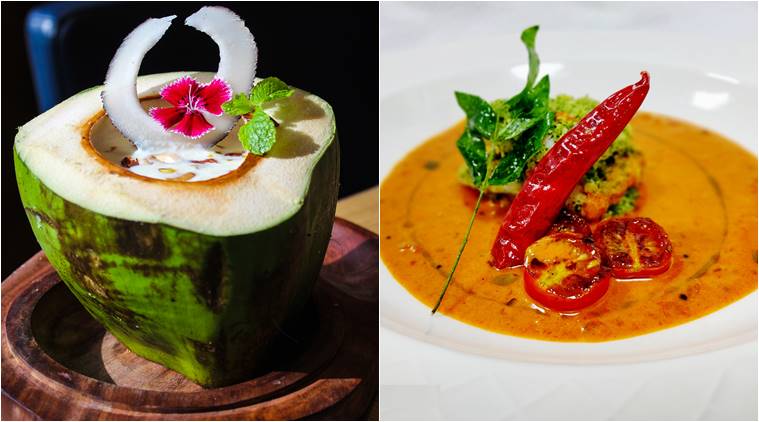 Coconut based dishes all over India.
Coconut based dishes all over India.
Be it to add sweetness to a dish, or to enhance the flavour with its juicy crunchiness, coconut is an integral part of Indian cuisine. From traditional treasures to flavours left behind by the French or Portuguese during their reign, these recipes find a rich history in the Indian cuisine. On this World Coconut Day, we take you around India and what how coconut cooks in the homes of the states.
Tamil Nadu
Elaneer Payasam: Payasam is a dessert loaded with sugar, ghee and dry fruits. This is rice payasam – a dessert which has many versions across the country — coconut milk.
Kerala
Puttu: Grated coconut is the hero steamed delicacy that is eaten for breakfast in Kerala. Coconut is used along with rice powder, corn powder, wheat, and ragi.
Kaalan: This is one of the components of the vast Kerala sadhya, and is made with vegetables and yoghurt. It is made into a thick gravy and includes raw papaya and yam. A smooth paste of coconut is added to it and is topped off with a mouth-watering tadka or seasoning of mustard seeds, dried red chillies and curry leaves.
Maharashtra
Modak: A fried or steamed delicacy, modak is indigenous to Maharashtra. It is a cooked ball of dough filled with grated coconut and jaggery. Known by different names in different states, this sweet dumpling is usually served as an offering to Ganesha.
West Bengal
Daab chingri: Mustard-laced prawns are cooked in a tender coconut shell. This is one of the most delectable curries in the state.
Narkel Naru:‘Narkel’ in Bengali means coconut and ‘naru’ means laddoo. This ball-shaped Bengali dessert is made from thickened milk and coconut. It is mostly consumed during Durga Puja.
Assam
Narikol Pitha: This is one of the sweetest delicacies in Assam. Coconut and sugar are roasted before mixing with other ingredients like flour and milk. The batter is then rolled into balls and flattened before being cooked.
Telangana
Chicken Malvani: Chicken is cooked in a spicy Malvani masala gravy which is flavoured with coconut milk. This is usually served with rice, chapatti or naan.
Hyderabadi Dum ka murgh wth coconut poppy seeds: This is a speciality of Hyderabadi cuisine. The chicken is marinated with spices and yogurt for a minimum of three to four hours and cooked in a Hyderabadi dum process.
Himachal Pradesh
Madra: A traditional Himachali dish made of chickpeas, with coconut paste, almonds, raisins, yoghurt and other spices. This dish has an aromatic flavour.
Goa
Chicken Xacuti: Chicken Xacuti (pronounced as sha-kuti) is a spicy Goan preparation with a rich blend of local spices and fresh coconut.
Jharkhand and Bihar
Thekua: It is a dry Indian sweetmeat which is also served as prasad during Chatt Puja. It is crispy, crunchy and rich in coconut.
Karnataka
Bisibele Bhaat: A spicy, rice-based dish quite similar to khichdi, it contains lentils, coconut and vegetables.
Orissa
Podo Pitha: Made by slowly baking fermented rice, black gram, grated coconut and jaggery, the crust of the dessert is slightly burnt, while the inside is soft and white.
Pondicherry
Creole Crevette: This French term translates into “Prawns in coconut milk”. French cooking influences Pondicherry cuisine greatly, and this is a perfect blend of Indian ingredients – turmeric and curry leaf – with French cooking.
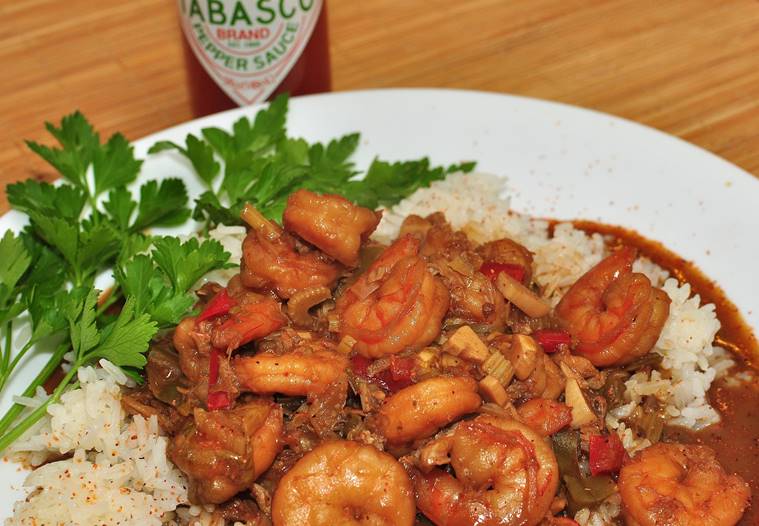 It is a tasty curation of prawns in coconut milk. (Source: Wikimedia Commons)
It is a tasty curation of prawns in coconut milk. (Source: Wikimedia Commons)
Lakshadweep
Mus Kavaab: Boneless fish cubes are marinated in a paste made with ground coconut, turmeric, chilli powder, coriander powder, cloves and cardamoms. The fish is then cooked with sautéed onions and flavoured with curry leaves, tomato jullienes and salt. This curry-kabab is served hot with rice or roti.
Andhra Pradesh
Gutthi Vankaya Curry: This stuffed brinjal dish uses a generous amount of coconut. The stuffing is made from a mix of desiccated coconut, finely ground spices and peanuts. Small and tender brinjals are stuffed with this masala and then cooked.
Chattisgarh
Khurmi: This is prepared on the occasion of the bull-worshipping Pola festival. A deep-fried dish, this can be eaten as a dessert or snack. Made up of wheat flour and jaggery, it is believed to be good for health. Coconut is added to enhance the flavours and provide a crunchy texture to the dish.
Gujarat
Khandvi: Being a coastal area and having an abundance of coconut trees, a lot of Gujarati food is tempered with coconut. Khandvi is one such snack that is made of gram flour and garnished extensively with coconut, curry leaves and mustard seeds.
Manipur
Madhurjaan Thongba: These are weet besan dumplings that are dropped in thickened, sweetened milk. The milk is flavoured with bay leaves and cardamon. The dish is served warm with a garnish of grated coconut on it.
Kashmir
Shufta: Shufta is a dessert made with cooked dry fruits and flavoured with coconut. A bit heavy on the palate, but goes down quite well in small portions.
Recipes
Daab chingri
By The Westin Hyderabad Mindspace
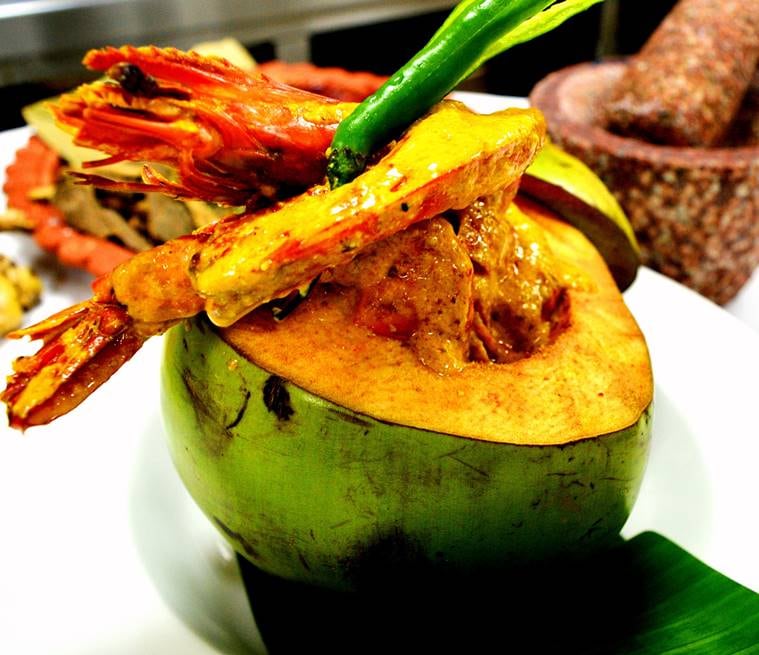 Daab chingri.
Daab chingri.
Ingredients
1000g – Jumbo prawns
40g – Mustard Paste
120g – Fresh Coconut
5g – Paanch Phoran
5g – Red Chilli Powder
40g – Onion
15g – Ginger
2-3 – Garlic
250 ml – Coconut milk
5g – Turmeric powder
Salt to taste
Sugar to taste
2 nos – Tender coconut
30g – Poppy seed
50g – Fresh Tomato
40g – Mustard oil
Method
* Cut out the top of the big tender coconut with a fine knife in a small round shape (2-inch diameter) and keep the cutout part aside. Make sure the tender coconut is full of kernel. Pour the coconut water into a separate bowl.
* Clean and devein the prawn. Add salt, turmeric powder and red chili powder to the uncooked prawns and keep it in a cool place for an hour.
* In a pan, pour mustard oil and lightly saute the prawns for not more than two minutes. Let it cool.
* Make a paste out of onions, tomatoes, green chili, ginger and garlic and keep it aside. Also, prepare a paste out of mustard, poppy seed and coconut.
* Heat the mustard oil, put paanch phoran and let it crackle. Add the onion tomato mixture and cook it for a while.
* Add coconut and mustard paste and cook it for two minutes.
* Add a little stock and when it starts boiling add the prawns. Finally, simmer it for two to three minutes.
* Add salt and sugar to taste, serve it hot.
Malabar fish curry
By Saurabh Srivastava, executive chef, Aloft New Delhi Aerocity
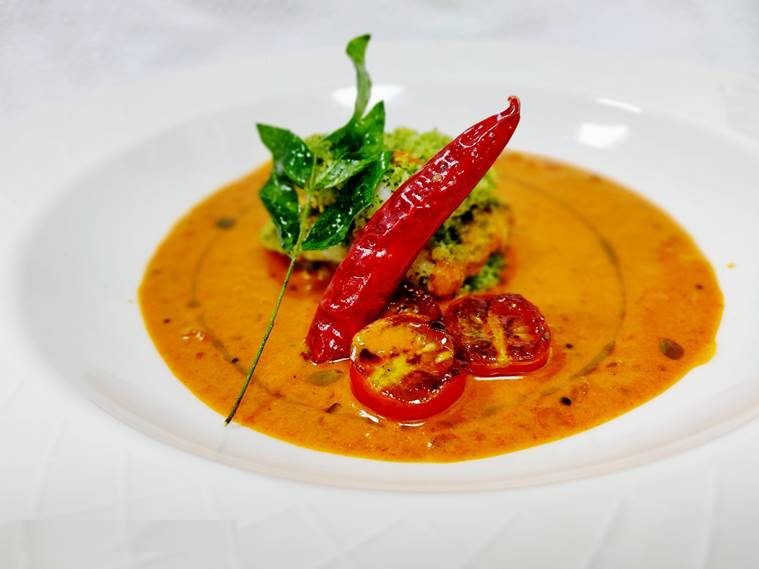 Malabar Fish curry.
Malabar Fish curry.
Ingredients
40g – Whole coriander seeds
60g – Whole red chilli
10 ml – Coconut oil
1g – Mustard seeds
10g – Chopped onion
3-4 nos – Curry leaf
20 ml – Coconut milk
5 ml – Tamarind pulp
5g – Chopped coriander
120g – Seabass fish curry cuts
Method
* Soak whole coriander seeds and whole begdi chilli together for three to four hours at least.
* Boil the soaked ingredients. After boiling make a paste and strain it.
* Take a pan, add coconut oil, mustard seeds, curry leaves and chopped onions, cook it till translucent.
* Put the strained paste, cook it well and add fish curry cuts in the gravy.
* Finish with coconut milk and tamarind pulp.
* Garnish with chopped coriander and fried curry leaves.
Elaneer paysam
Courtyard by Marriott Bengaluru Hebbal
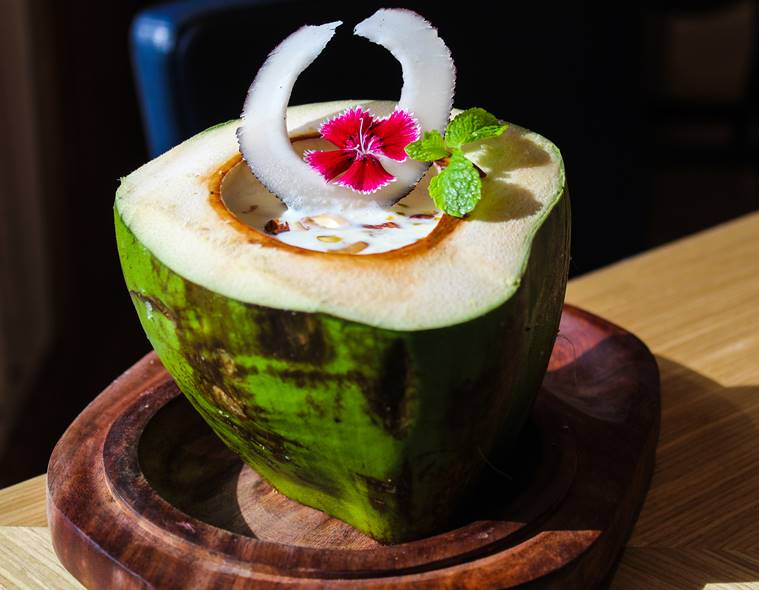 Elaneer payasam.
Elaneer payasam.
Ingredients
3/4cup – Tender coconut pulp
1 cup – Tender coconut water
1 cup – Milk
3 tbsp – Condensed milk
1 – Cardamom, powdered
4 – Cashew nuts
1/2 tsp – Ghee
Method
* Boil milk and put the flame to medium or low and let it thicken for five minutes.
* Cool the milk completely. Meanwhile, grind tender coconut pulp, water coarsely or smoothly, as per your preferance. Save few bits for garnish.
* Golden fry cashew nuts in ghee. Mix the ground pulp to the cooled milk.
* Add condensed milk, cashew nuts along with cardamom powder and mix well. Serve chilled
📣 For more lifestyle news, click here to join our WhatsApp Channel and also follow us on Instagram





- 01
- 02
- 03
- 04
- 05






















